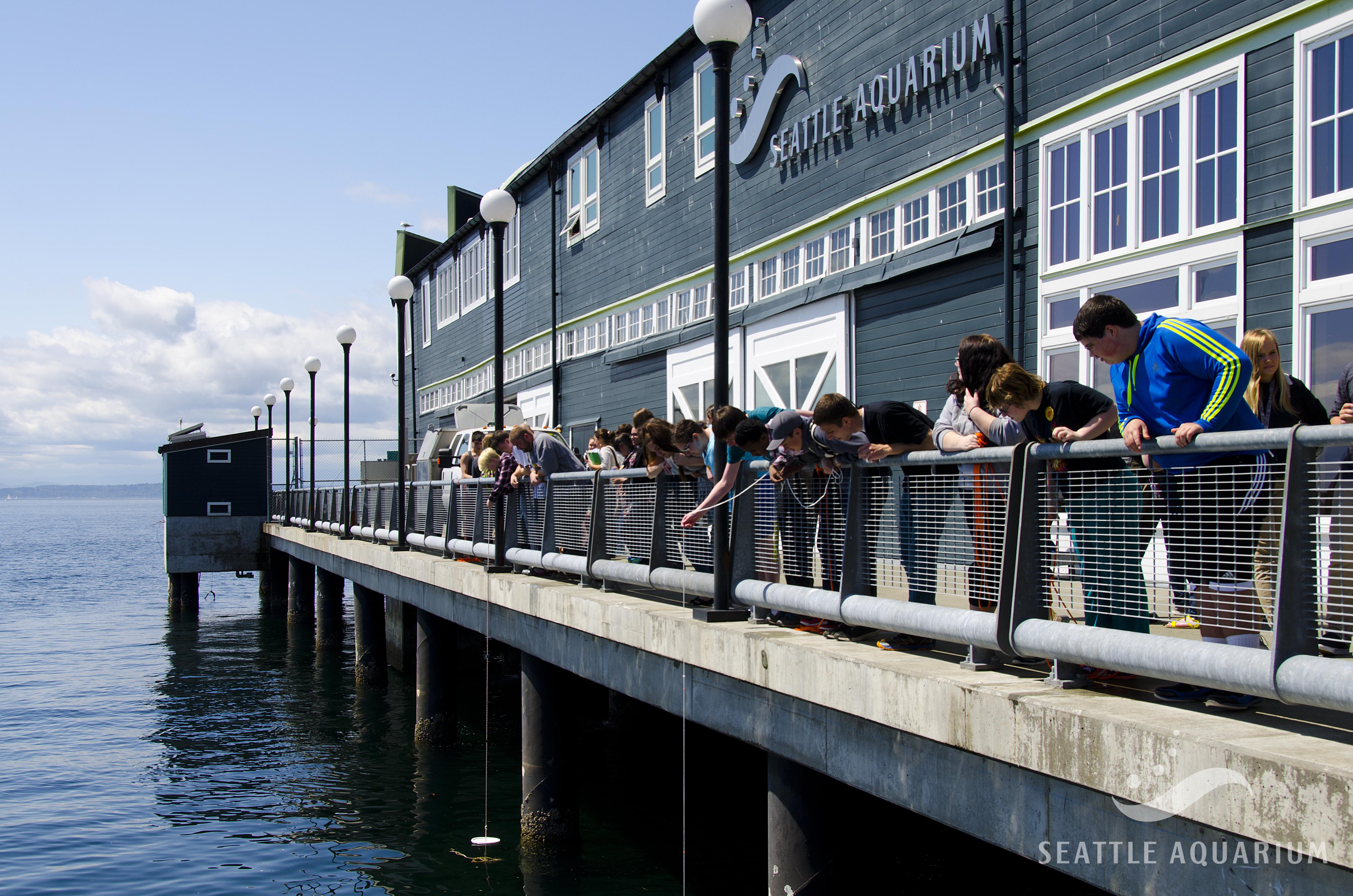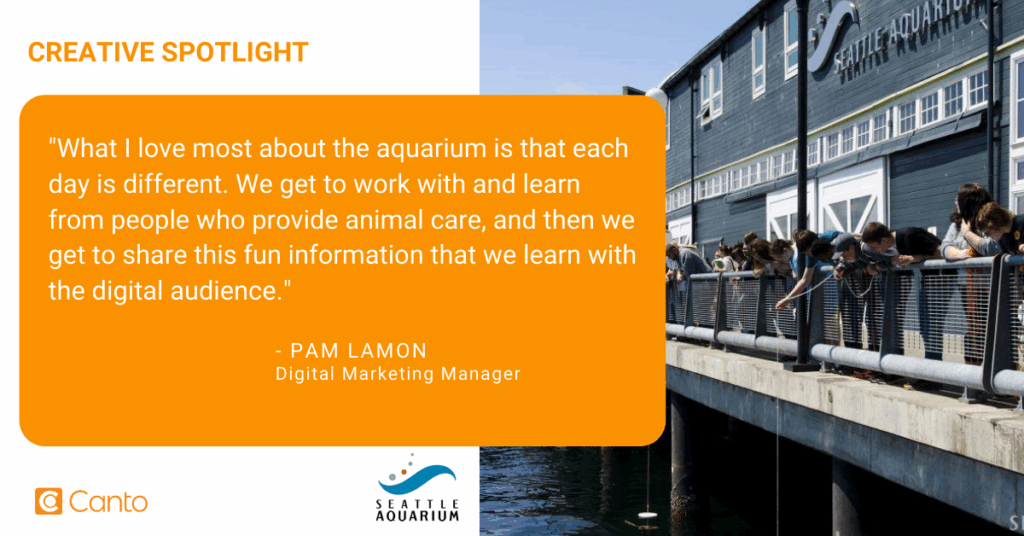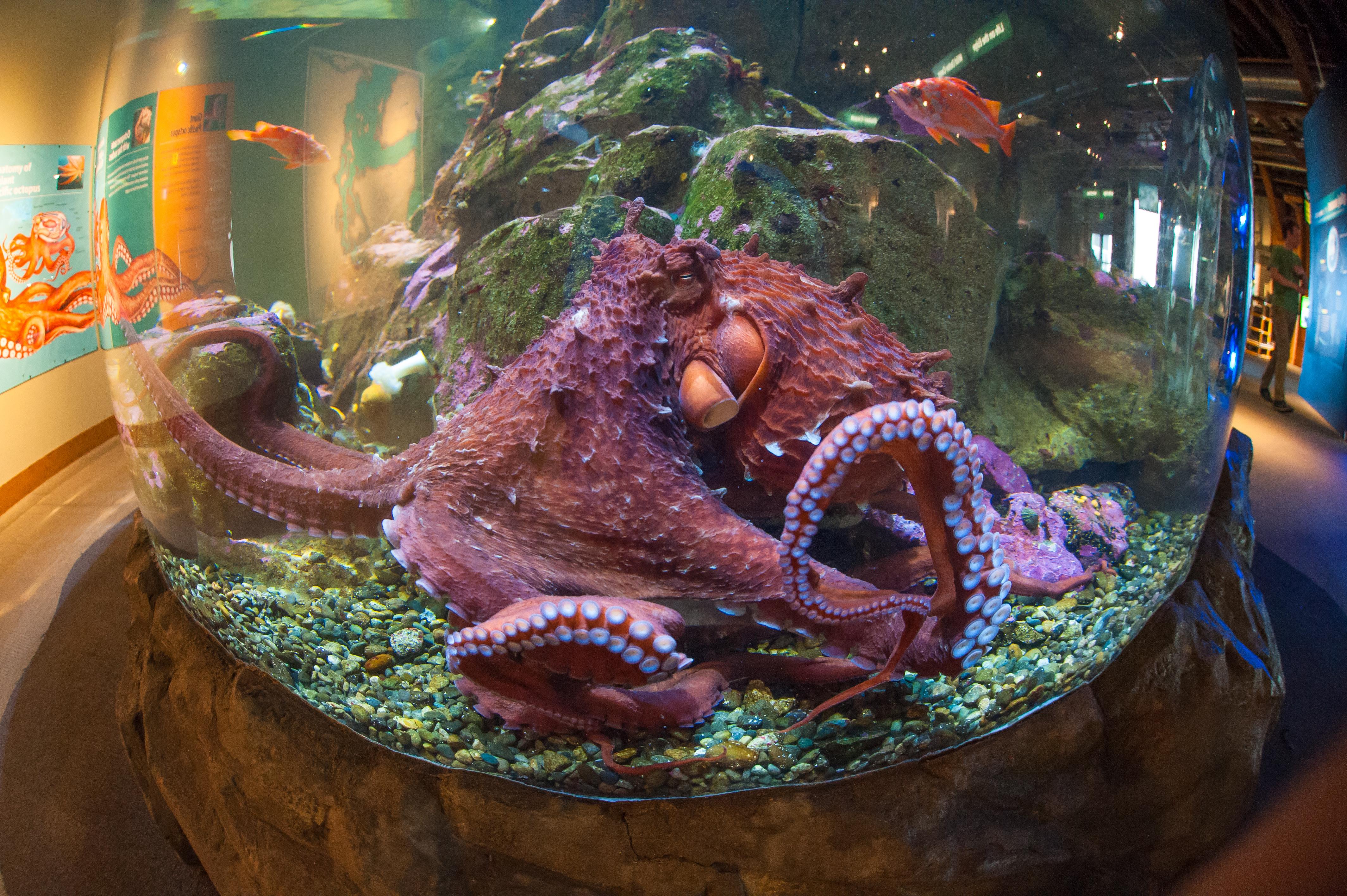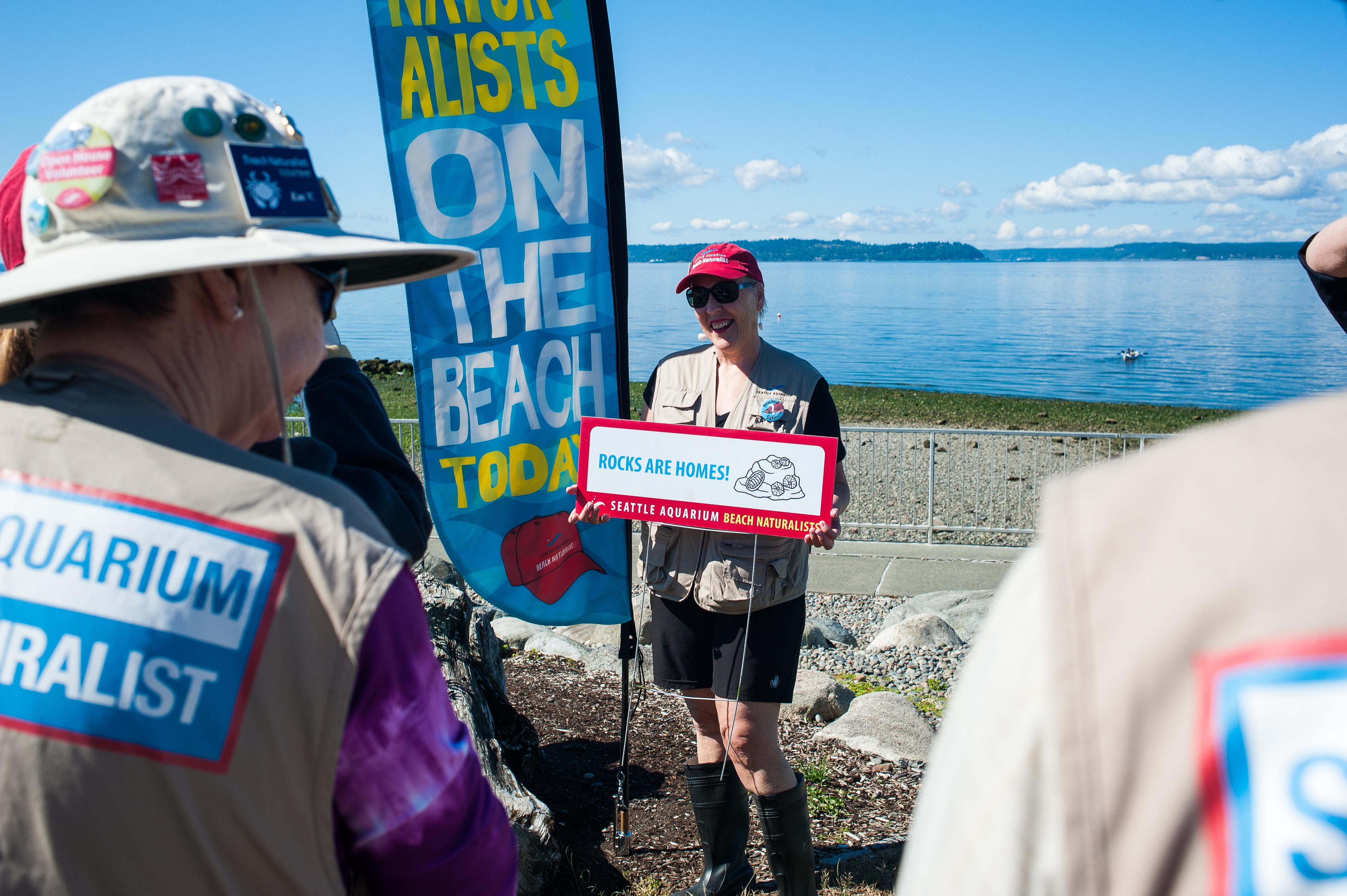Creative Spotlight: Diving into mission-driven marketing with Pam Lamon from Seattle Aquarium
| July 10, 2019

Pam Lamon is the Digital Marketing Manager at the Seattle Aquarium, where she and her team run the nonprofit’s website, social media and email marketing strategy. We sat down with Pam to learn about her team’s role as the aquarium ramps up its conservation efforts, her personal journey as a marketing professional at a mission-driven organization and which sea creature has won her heart after eight years in the field.
About Seattle Aquarium

As environmental crises such as pollution threaten marine life, the Seattle Aquarium has naturally expanded its mission beyond educating the public to advocating for conservation policy. The digital marketing team uses Canto to manage photos and videos from volunteer content contributors and to easily share assets with press and the public. Read their story here.
Thanks for joining us, Pam! One of the coolest things about working at Canto is getting to talk to creative and passionate people like yourself across all sorts of different industries. Tell us about how you got started at Seattle Aquarium and what gets you fired up about your work.
I started at Seattle Aquarium about 8 years ago as the first and only hire that focused on digital marketing. No one was managing the website and social media channels at the time, so they needed someone to develop the brand and keep it consistent across different channels. I came in and expanded their digital presence by creating a blog to tell our conservation stories, and expanded our social media reach by adding new channels and live-stream webcams.
What I love most about the aquarium is that each day is different and I learn something new every single day. We get to work with and learn from people who provide animal care, and then we get to share this fun information that we learn with the digital audience.
It must be amazing to come into work every day and know that you’re changing the world. I know you came to the Seattle Aquarium from the private sector, so I’m curious about your transition to the nonprofit world. Were you super deep into the ocean before Seattle Aquarium (no pun intended), or did you grow passionate about it after you joined?
I came from a small leadership development startup where I was an office administrator and marketing coordinator. While I was working there, I was finishing up my certificate in Advanced Interactive Marketing. This was around the time that social media was becoming an important marketing channel for businesses. I started becoming interested in digital and social media marketing and realized that my role wasn’t the right fit. And then the position at the Seattle Aquarium opened up at the same time.
I’ve always had a passion for animals – I grew up with six different types of animals. We always had dogs and hamsters, I had a tree frog at one point, and we had a fish tank, so I’ve always had some type of animal in my life. But I wasn’t looking for something directly related to marine life. It was just the right time.
OK, now for the most important question: What’s your favorite marine animal and why?
When I first started here without knowing anything, it was the sea otter. Who doesn’t love a cute, fluffy sea otter? But now it’s the octopus! The giant Pacific octopus. They are super intelligent and it’s just amazing what they can do. One fun fact is that octopuses are color blind, so it’s still a mystery how they’re able to change colors to camouflage into their surroundings!

I’ll be honest and say I love sea otters like everyone else, but you’ve given me such a cool new perspective on octopuses. It sounds like the Seattle Aquarium has been doing a lot of great things with conservation and even influencing policy. We would love to learn more about your involvement in that.
In the next three to five years, we’ll be opening a third building in our location to focus on holistic conservation messaging. It’ll house more of our tropical exhibits and the goal is to help people understand that there’s only one world ocean, and that things impacted here in the Puget Sound and Salish Sea are affected across the other side of the world as well. As part of that initiative, we created a new conservation department to drive the new messaging as well as local policy and advocacy. In addition, the Southern Resident orcas (the killer whale population living off the US Pacific coastline) are on the decline right now, so we’ve been taking a strong stance on that.
With that comes more assets and communications strategy that we need to provide and manage. Back in the day, we managed all our digital assets via computer file system, so our designer had a difficult time searching and finding collateral pieces they could use. Canto has really helped us in terms of search functionality and metadata. A big thing for me was understanding permission rights for those assets. In the past, we’ve run into trouble using content for which we didn’t have the rights.
I’m excited about how we’re telling our story to create change and influence people’s actions – to get them to reduce their use of plastics, decide that they’re going to be more conservation-focused, understand beach etiquette better, or see how everything is all connected.
I saw some of the legislation wins that the aquarium impacted recently and it must feel incredible to be able to point to that and say, we impacted that.
Yeah, and that’s only happened within the past year, so it’s been a dramatic change.

With all of the incredible work down the line for the aquarium, what are some of the projects that you’re really excited about?
There’s so much coming up, it’s hard to choose. I would have to say the potential for growth and how we’re focusing more on conservation messaging. I’m excited about how we’re telling our story to create change and influence people’s actions – to get them to reduce their use of plastics, decide that they’re going to be more conservation-focused, understand beach etiquette better, or see how everything is all connected. Any little change people can make really helps out.
Speaking of little changes, what’s one easy thing we can do to help ocean conservation efforts when we’re enjoying the beach this summer?
There are simple changes you can make at home like reducing the amount of plastic you use, because plastic that ends up in the ocean harms marine life. One of the campaigns we did was called Strawless in Seattle, so you won’t get plastic straws anymore in Seattle. I also no longer use plastic Ziplock bags and use reusable silicone bags instead.
In terms of beach etiquette, be careful walking around rocks and eelgrass beds at low tide because there are a lot of animals that are stranded in the tide pools and that’s their home. Another thing we see is that people like to collect shells on the beach, but those shells are potentially new homes for certain animals such as hermit crabs, so we always recommend to not take the shells home. People also love finding little crabs underneath the rocks (I love doing this with my son), but don’t pick them up and move them to a different location because that’s a bad experience for the animal.
So the goal is to treat everything on the beach with a certain amount of empathy, right?
Yes, and that’s a big initiative for us. We’ve created some new collateral and signage for the beach that say things like “Look down, this is my home.” We’ll use these when our beach naturalists are out interacting with the public to encourage people to treat the beach and marine animals with empathy and respect.
